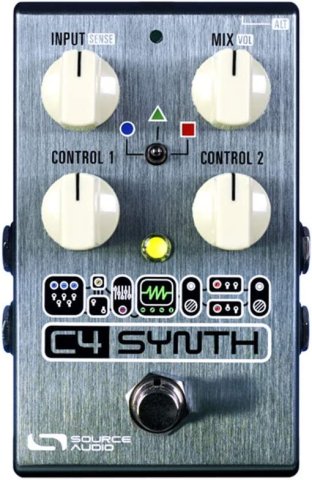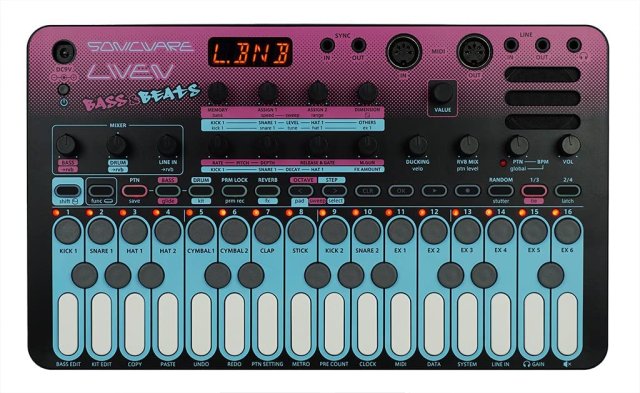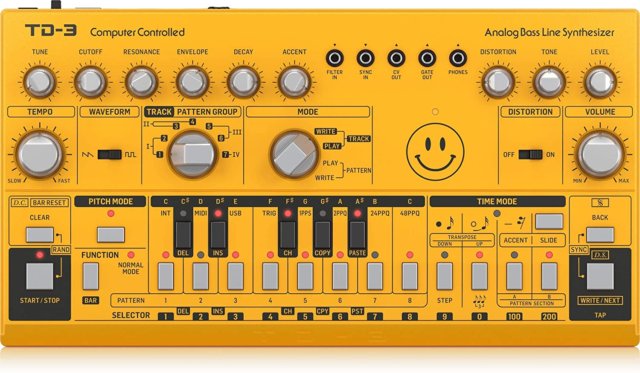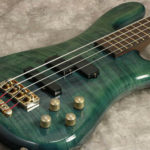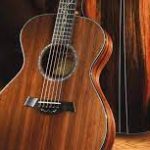synthesizer pedals
Guitar synthesizers usually come in the form of an effects pedal that offers the ability to make a guitar sound like a synthesizer. This emulation process is different for each pedal, with some using analog circuitry to embed a squarewave LFO into your signal while others may use digital computer chips and algorithms.
Advances in digital signal processing have allowed effect makers to create stompboxes, which can make guitars sound like any other instrument. There is such a huge variety of options available; everything from pedals designed to emulate specific vintage synths to octave dividers and full-blown experimental devices.
To understand the details, let’s start with the most common subcategories.
Analog-Style Synth Pedals
There are no analog synthesizers, at least not the real thing, without an oscillator. That is a device that generates an electric wave, whose pitch can be changed depending on how quickly it oscillates. The stompboxes that come closer to being true analog synths are the ones that track your signal and convert them into a similar sound generated by an oscillator.
These devices will then process that resulting tone through other circuits typically found in traditional analog synths; such as resonating low and high-pass filters and an LFO (modulation). A filter that cuts some of the signal’s frequencies (like a wah pedal) is the foundation of “subtractive synthesis.” This is the basis for an overwhelming majority of analog synthesizers on the market.
Pitch Multiplier Synth Pedals
Many digital stompboxes billed as “synth pedals” don’t actually have any oscillators under their hoods, but simply use octaving or multi-note pitch shifting to create a resulting tone that sounds “synthetic.” This is more or less the basis of additive synthesis, in which new timbres are created by adding one or more harmonics to the fundamental pitch.
If you’ve ever looked at a drawbar organ, such as a Hammond, and wondered what all those sliders are for, they’re for adding harmonic partials— such as 2nds, 3rds and 5ths—to the fundamental tone to create new, complex sounds. Often these pitch shifted notes are fed through subtractive synthesis circuits (filters), creating pedals using what we could call hybrid synthesis
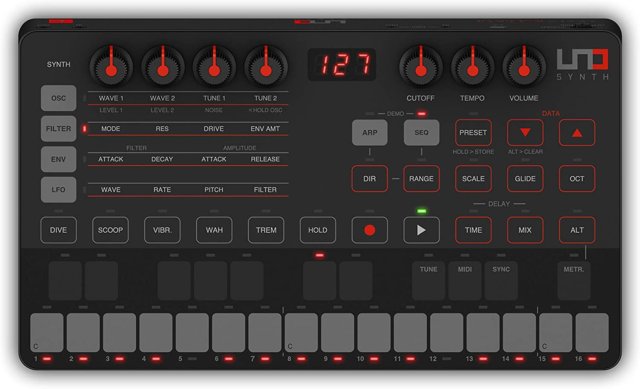
Granular Synth Pedals
Digital technology has allowed the development of a new kind of synthesis whose sound sources aren’t based on oscillators but samples, i.e. recorded bits of sound. Some of the most edgy-sounding and experimental pedals out there belong to this category. They take your sound and mangle it in ways that were unimaginable until a few years ago. In this field, granular synthesis is the name of the game.
Fuzz Based Synth Pedals
The grating sounding square wave is one of the most common waves an oscillator can create. Since a fuzz pedal converts your signal into something very close to a square wave, many stompboxes that present themselves as “synth pedals” use this simple trick to achieve a basic synthy tone, subsequently combining it with the usual filter-based subtractive synthesis effects.
Replicating Pedals
There are many devices, that are categorized as synth pedals, but don’t perform certain tasks. Some smaller units will not track and replace, pitch shift or square up signals. While others will feature effects like, resonant filters and modulation. This enhances a regular guitar tone, and can vary from simple to extreme.
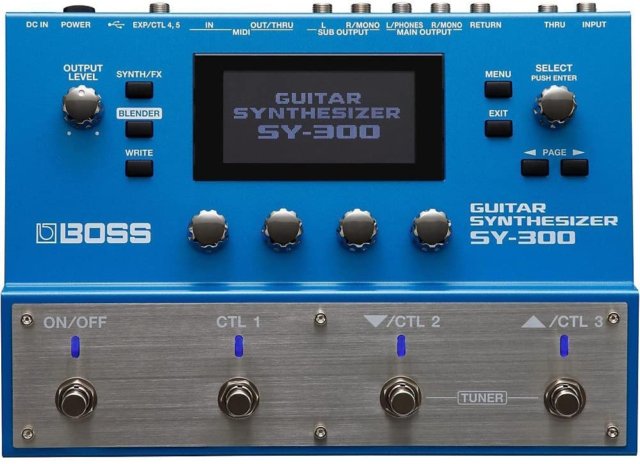
MONOPHONIC/POLYPHONIC
Mono synths are cheaper to produce. They are simpler, since they don’t have multiple components, and filters. They are still very versatile devices, with only one voice. A synth can produce a wide variety of sounds, from one voice. Some people prefer simpler concepts that are less detailed and complicated.
You can do a lot more with one note on a synth than any other instrument. The keyboard playing technique is way different on mono synths. You can’t do certain things like trills and legato in the same way on poly keys unless they’ve got a mono mode switch. Many analog synths operate as monophonic, and are mostly used for solo parts or basslines.
Despite their limitations, Monophonic synthesizers are some of the most popular synths for music production. Producers like their ability to create thick bass sounds and rythms. They also work well for bass drums and percussive textures.
MONO works best for basslines and lead sounds. You can always add synthesizer effects, somewhere in the mix. STEREO creates lush sounds and blends complex phrases.
A monophonic instrument can only play one note at a time. Many analog synths operate this way, and are mostly used for solo parts or basslines. A polyphonic synth is an instrument that can reproduce chords. In this case, some pedals will require time to learn all the functions.
There are mode and oscillator knobs, which control how rapidly the synth cycles. Some units have attack and sustain knobs, for layering effects. Synth pedals come in so many varieties, you will have to spend some time, to find one that will accomodate what you’re interested in. They can be anywhere from simple to complex.
Truly Polyphonic Pedals
These are the stompboxes that can track more than a note at a time—play a chord with the guitar and get a reproduced chord that sounds like a synth. Needless to say, polyphonic pedals are also monophonic if you want them to be, since they do an equally good job on tracking single notes.
Pitch-Based Polyphonic Pedals
These pedals produce chords (i.e. polyphony) out of a single note played on your instrument by splitting the signal into several notes with different pitches. But if you try to feed them a chord, you’ll get something that very closely approximates horror.
Make sure you aren’t looking into options that ask you to use a special pickup in your guitar. That’s no longer necessary. Removing that step from the process is one less thing to worry about. Modern guitar synth pedals can work with single-coil and humbucking pickups.
You’ll want to consider how extreme you want to push this effect. There are many, fantastic monophonic analog options. If you want more versatility, there are more modern, digital and polyphonic options too. In that same vein, the digital ones will have many modes you can select from.
Knob Settings
OCTAVE KNOB
This will let you move up or down the frequency spectrum like an octaver or harmonizer pedal.
MIX KNOB
This option allows you to mix and blend the sounds you create. You can use your original tone, and combine it with the synthesized versions, to create unique sounds.
The guitar synth also enables a guitarist with limited or no keyboard-playing skills to provide MIDI input into digital notation programs such as Sibelius, Finale or MuseScore.
Many devices billed as “synth pedals” don’t track-and-replace, pitch shift or “square up” the signal at all.
Recommended Synth Pedals
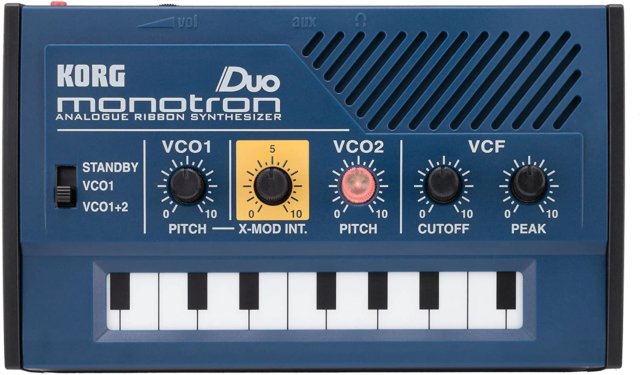
Korg Monotron Duo
Now the powerful and fun-to-play monotron is joined by two new siblings. Each is played from a ribbon controller keyboard with newly added features.
Moog Werkstatt-01 Analog Synthesizer
Monophonic Semi-modular Analog Synthesizer with VCO
Included CV Expansion Board
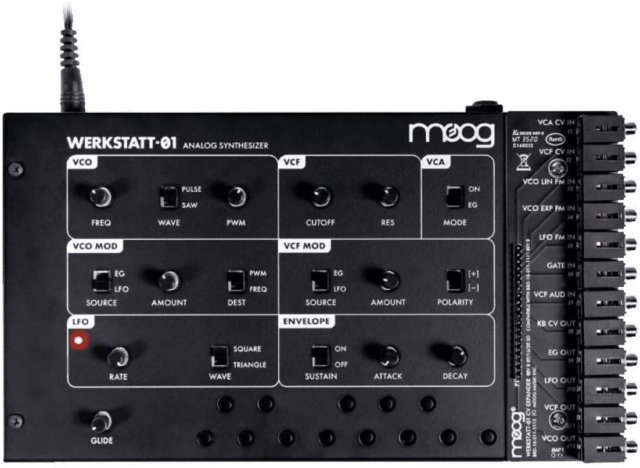
Behringer TD-3-AM Analog Bass Line Synthesizer
Amazing Bass Line synthesizer with true analog circuitry for bass and groove sounds
Authentic reproduction of original circuitry with matched transistors
Jackson Audio Optimist EQ
For all of its hype, this magical pedal is still one of the most natural-sounding overdrives ever created and has cemented its reputation in the history of guitardom. We reproduced this circuit in perfect detail to provide the stock tone that people are looking for from this legendary pedal.
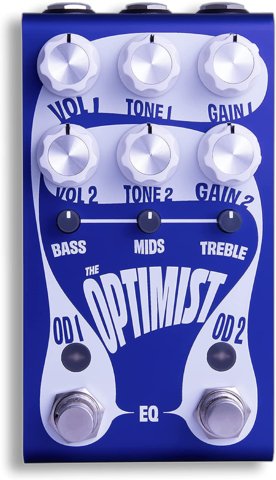
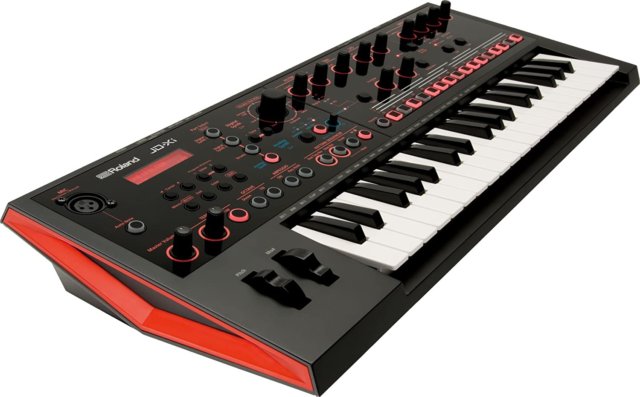
Roland JD-XI 37-Key Interactive
Tiny, mighty, and affordable, the JD-Xi puts a true analog synth engine, Roland’s famous SuperNATURAL synth sounds, and many other creative tools under one hood.




